Leatherback Sea Turtle
- April 2, 2024
- 0 comment
The Leatherback Sea Turtle, also known by its scientific name Dermochelys coriacea, stands as a magnificent testament to the wonders of marine life. Renowned for its immense size and unique adaptations, this ancient reptile roams the world’s oceans with a grace and majesty that captivates all who encounter it. Unlike other sea turtles, the Leatherback boasts a shell that’s not rigid and bony but instead covered in a thick, leathery skin, from which it derives its name.

This distinguishing feature enables it to dive to astonishing depths, traversing the vast expanses of the ocean with ease. Leatherbacks are the largest of all sea turtle species, with adults reaching lengths of up to 7 feet and weighing as much as 2,000 pounds. Their global range spans both tropical and temperate waters, where they undertake some of the longest migrations of any marine animal, traveling thousands of miles each year in search of food and suitable nesting sites. Feeding primarily on jellyfish, squid, and other soft-bodied organisms, Leatherbacks play a crucial role in maintaining the balance of marine ecosystems as top predators.
Despite their grandeur, these magnificent creatures face numerous threats to their survival, including habitat loss, pollution, bycatch in fishing gear, and climate change. Conservation efforts are essential to ensure the continued existence of Leatherback Sea Turtles, preserving their legacy for generations to come.
| Category | Specification |
|---|---|
| Scientific Name | Dermochelys coriacea |
| Common Name | Leatherback Sea Turtle |
| Shell Type | Leathery, flexible |
| Size | Up to 7 feet in length |
| Weight | Up to 2,000 pounds |
| Habitat | Worldwide oceans, tropical and temperate waters |
| Diet | Mainly jellyfish, also squid and other soft-bodied organisms |
| Reproduction | Females return to nesting beaches to lay eggs |
| Migration | Undertakes long migrations across oceans |
| Threats | Habitat loss, pollution, bycatch, climate change |
| Conservation Status | Endangered |
The Majestic Leatherback Sea Turtle: A Marvel of Nature’s Engineering
Leatherback sea turtles, also known as Dermochelys coriacea, are among the most fascinating creatures in the ocean. From their immense size to their unique adaptations, these turtles captivate the imagination of scientists and nature enthusiasts alike. In this article, we’ll delve into the world of leatherback sea turtles, exploring their physical characteristics, habitat, feeding behavior, reproduction, conservation status, and their importance in the ecosystem.
Physical Characteristics
Size and Weight
Leatherback sea turtles are renowned for their immense size, making them the largest of all sea turtle species. Adults can reach lengths of up to 7 feet (2.13 meters) from head to tail, and they can weigh as much as 2,000 pounds (900 kilograms). These impressive dimensions set them apart from their relatives and make them a marvel of the ocean.


Shell Structure
What truly distinguishes the leatherback sea turtle is its shell structure. Unlike other sea turtles, whose shells are hard and bony, the shell of a leatherback is covered in a thick, leathery skin. This flexible shell, comprised of connective tissue, provides the turtle with unique advantages. It allows the leatherback to withstand the immense pressure of deep dives, reaching depths of over 4,200 feet (1,280 meters). Additionally, the flexibility of the shell enables the turtle to navigate through the water with remarkable agility, making it a highly efficient swimmer. This adaptation has enabled the leatherback sea turtle to thrive in a wide range of oceanic environments, from the tropics to the frigid waters of the Arctic.
Habitat and Distribution
Global Range
Leatherback sea turtles boast a vast global range, inhabiting oceans around the world. They can be found in both tropical and temperate waters, making appearances in regions as diverse as the Caribbean, Pacific, Atlantic, and Indian Oceans. From the warm waters of the tropics to the cooler temperatures of more temperate zones, leatherbacks adapt to various climates and habitats. Their ability to thrive in such a wide range of environments contributes to their status as one of the most widely distributed marine reptiles.


Migration Patterns
One of the most remarkable aspects of leatherback sea turtles is their extensive migration patterns. These majestic creatures undertake some of the longest migrations of any marine species, traveling thousands of miles each year. They navigate vast distances across oceans, moving between feeding grounds and nesting beaches. The exact routes and timing of their migrations vary among individuals and populations, but leatherbacks are known to travel between breeding and feeding areas with remarkable precision. Their migratory journeys play a crucial role in their life cycle, allowing them to access essential resources and fulfill their reproductive needs.
Feeding Behavior
Diet
Leatherback sea turtles have a unique and specialized diet that primarily consists of jellyfish. However, they are also known to consume other soft-bodied organisms such as squid and tunicates. Their preference for jellyfish makes them important regulators of jellyfish populations in the ocean. Despite their large size, leatherbacks have delicate feeding mechanisms that allow them to capture their slippery prey efficiently. Their esophagus is lined with backward-pointing spines and papillae, which prevent prey from escaping once ingested. This adaptation ensures that they can consume their gelatinous meals without difficulty, even as they navigate the vast expanses of the ocean.

Unique Adaptations
One of the most remarkable adaptations of leatherback sea turtles is their ability to regulate their body temperature, allowing them to inhabit a wide range of oceanic environments. Unlike other reptiles, which rely on external sources of heat to maintain their body temperature, leatherbacks possess a unique system of blood vessels in their flippers. These blood vessels act as a heat exchanger, enabling the turtles to retain warmth in cold waters and dissipate excess heat in warmer environments. This thermoregulatory mechanism allows leatherbacks to thrive in a variety of climates, from the frigid waters of the Arctic to the tropical waters of the equator.
Additionally, leatherbacks have a counter-current heat exchange system in their flippers, which helps them conserve energy during long-distance swims. These adaptations make them highly efficient swimmers and enable them to undertake their impressive migrations with ease..
Reproduction and Life Cycle

Nesting Habits
Leatherback sea turtles exhibit fascinating nesting habits that are crucial to their reproductive success. Female leatherbacks return to the same beaches where they were born, a behavior known as natal homing, to lay their eggs. This remarkable navigational ability allows them to locate specific nesting sites with remarkable accuracy, even after traveling thousands of miles across oceans. Once ashore, the female leatherback uses her powerful flippers to dig a nest in the sand, where she deposits a clutch of eggs. After carefully covering the nest, she returns to the ocean, leaving the eggs to incubate unattended.
Leatherback nesting sites are often located on remote, undisturbed beaches, where the eggs are less vulnerable to predation and human disturbance. However, despite these precautions, leatherback nests still face threats from natural predators, such as crabs and birds, as well as human activities such as coastal development and egg poaching.
Hatchling Survival
The journey from nest to sea is a perilous one for leatherback hatchlings, and only a small percentage will survive to adulthood. After an incubation period of approximately 60 days, the hatchlings emerge from their nests and instinctively make their way to the ocean. They are guided by the moonlight reflecting off the water, which helps them navigate towards the sea. However, this journey is fraught with danger, as hatchlings must evade predators such as birds, crabs, and fish that lie in wait along the shore.

Additionally, human activities such as artificial lighting and coastal development can disorient hatchlings, leading them away from the ocean and towards danger. Despite these challenges, leatherback hatchlings possess remarkable resilience, and those that successfully reach the water beg
Conservation Status

Threats
Leatherback sea turtles face a multitude of threats to their survival, putting their populations at risk of decline. One significant threat is habitat loss and degradation due to coastal development, which encroaches upon nesting beaches and disrupts important nesting habitats. Pollution, particularly plastic pollution, poses another grave danger to leatherbacks, as they may ingest or become entangled in marine debris. Additionally, leatherbacks are highly susceptible to bycatch in fishing gear, such as longlines and gillnets, leading to injuries or death.
Climate change exacerbates these threats by altering nesting beach temperatures, affecting hatchling survival rates, and causing shifts in ocean currents and prey availability. These cumulative impacts contribute to the overall decline of leatherback sea turtle populations worldwide.
Conservation Efforts
Efforts to conserve leatherback sea turtles encompass a range of strategies aimed at mitigating the threats they face and promoting their long-term survival. One crucial aspect of conservation is the establishment of marine protected areas and sanctuaries, where leatherbacks are afforded refuge from human activities and habitat degradation. Additionally, initiatives to reduce plastic pollution and promote responsible waste management help to safeguard leatherbacks and other marine species from the harmful effects of marine debris. Fisheries management measures, such as the use of turtle-excluder devices (TEDs) and circle hooks, aim to reduce bycatch and minimize the impact of fishing on leatherback populations.
Public awareness campaigns and community engagement efforts play a vital role in fostering stewardship and advocacy for leatherback conservation. By raising awareness about the threats facing leatherbacks and promoting sustainable practices, conservation organizations and government agencies work together to ensure a brighter future for these magnificent marine reptiles.
Importance of Leatherback Sea Turtles
Ecological Role
Leatherback sea turtles play a crucial ecological role as keystone species in marine ecosystems. As top predators, they help regulate populations of jellyfish and other prey species, preventing the overabundance of these organisms and maintaining ecosystem balance. By consuming large quantities of jellyfish, leatherbacks indirectly benefit other marine species that compete with jellyfish for resources. Additionally, leatherback sea turtle eggs and hatchlings provide nutrients to coastal ecosystems, contributing to the health of beach habitats.

Furthermore, leatherback nesting sites serve as important biodiversity hotspots, supporting a variety of plant and animal species. The presence of leatherback sea turtles influences the distribution and abundance of other marine organisms, making them integral components of marine food webs.
Cultural Significance
Leatherback sea turtles hold profound cultural significance in many societies around the world. Revered as symbols of wisdom, longevity, and resilience, these majestic creatures feature prominently in folklore, mythology, and spiritual beliefs. In some cultures, leatherbacks are regarded as sacred beings, embodying the connection between humans and the natural world. Traditional ceremonies and rituals centered around leatherback nesting events celebrate the turtles’ return to nesting beaches and honor their role in the ecosystem.
Additionally, leatherback sea turtles inspire awe and admiration among people of all ages, fostering a sense of wonder and appreciation for the wonders of nature. Their conservation is not only essential for preserving biodiversity but also for safeguarding cultural heritage and traditional knowledge passed down through generations.
Different Species
While there is only one species of Leatherback Sea Turtle, Dermochelys coriacea, there are various populations or subpopulations that inhabit different regions of the world.

Frequently Asked Questions (FAQs)
- Why are leatherback sea turtles called “leatherback”?
Leatherback sea turtles are named for their unique shell, which is covered in a thick, leathery skin rather than being hard and bony like other turtle species. - Where do leatherback sea turtles live?
Leatherback sea turtles are found in oceans around the world, ranging from tropical to temperate waters. They have a wide distribution and are known to undertake long migrations. - What do leatherback sea turtles eat?
Leatherback sea turtles primarily feed on jellyfish, but they also consume other soft-bodied organisms such as squid and tunicates. - Are leatherback sea turtles endangered?
Yes, leatherback sea turtles are classified as endangered species. They face numerous threats including habitat loss, pollution, bycatch in fishing gear, and climate change. - How do leatherback sea turtles reproduce?
Female leatherback sea turtles return to nesting beaches to lay their eggs. They dig nests in the sand and deposit their eggs before returning to the ocean. - How long do leatherback sea turtles live?
The exact lifespan of leatherback sea turtles in the wild is not well known, but they are estimated to live several decades. - What can I do to help leatherback sea turtles?
There are several ways to contribute to leatherback sea turtle conservation efforts, including supporting initiatives to reduce plastic pollution, advocating for sustainable fishing practices, and participating in beach clean-ups. - Do leatherback sea turtles have any predators?
Leatherback sea turtle hatchlings face numerous predators on their journey from nest to sea, including birds, crabs, and fish. However, adult leatherbacks have few natural predators due to their large size and thick skin. - How do leatherback sea turtles regulate their body temperature?
Leatherback sea turtles have a unique system of blood vessels in their flippers that allows them to regulate their body temperature, enabling them to inhabit a wide range of oceanic environments. - Why are leatherback sea turtles important?
Leatherback sea turtles play a crucial role in marine ecosystems as top predators, helping to regulate populations of jellyfish and other prey species. Their conservation is essential for maintaining healthy ocean ecosystems.



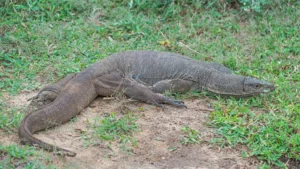
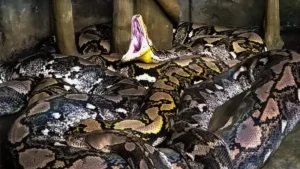
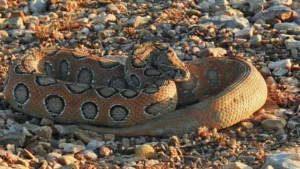
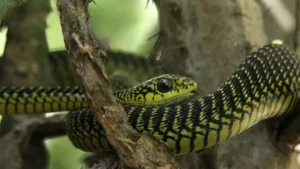

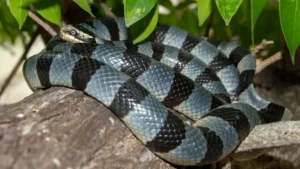
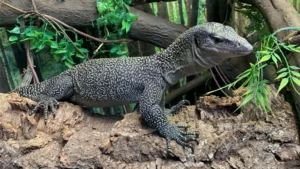
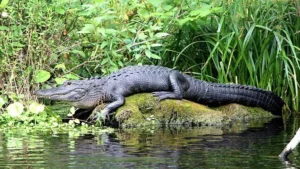


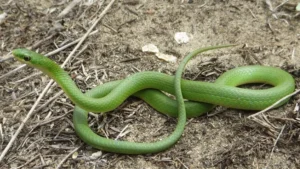
Leave your comment